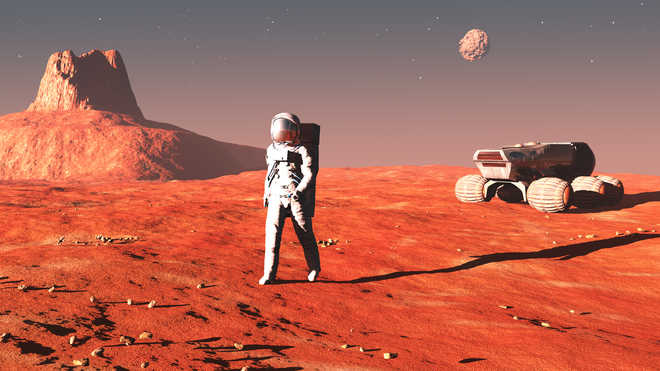Adelaide, September 29
SpaceX on Friday unveiled its plans to put humans on Mars as early as 2024.
Speaking on the final day of the 68th International Astronautical Congress (IAC) here, SpaceX founder and CEO Elon Musk made the announcement of the plans, reports Xinhua news agency.
Musk, who also serves as the CEO of automotive company Tesla, said SpaceX was aiming for cargo missions to the Red Planet in 2022 and crew with cargo by 2024.
He said that missions to Mars would be launched every two years from 2022 onwards with colonisation and terraforming to begin as soon as the first humans arrive in order to make it “a really nice place to be”.
“It’s about believing in the future, and thinking that the future will be better than the past,” Musk said.
SpaceX also announced its new BFR rocket on Friday.
“I can’t emphasise enough how profound this is, and how important this is,” Musk told the Congress as the keynote speaker on the final day.
The new BFR has the highest capacity payload of any rocket ever built, meaning it has the lowest launch cost, due to its status as a fully reusable rocket while also being the most powerful.
“It’s really crazy that we build these sophisticated rockets and then crash them every time we fire,” Musk said.
He said that the new BFR could carry a 40-carriage spaceship to Mars with two or three people occupying each carriage.
The rocket is capable of flying from Earth to the Moon and back without refuelling, making creating a base on the Moon, dubbed Moon Base Alpha, achievable in near future.
SpaceX intends for the new, scaled-down BFR to replace its other flagship rockets, the Dragon, Falcon 9 and Falcon Heavy.
Musk said the BFR could even be used for international flights on Earth, promising to cut most long-distance Earth flights to just half an hour.
He said the rocket could travel from New York City to Shanghai in 37 minutes at a maximum speed of 18,000 miles (28,968 km) per hour.
Funding for BFR development will come from SpaceX’s satellite and International Space Station (ISS) revenue.
SpaceX’s announcement came hours after Lockheed Martin revealed new technology that would see it land on Mars in partnership with NASA by 2030.
SpaceX estimated this year that a permanent, self-sustaining colony on Mars was 50 to 100 years away.




 Driving Naari Programme launched in Chandigarh
Driving Naari Programme launched in Chandigarh































